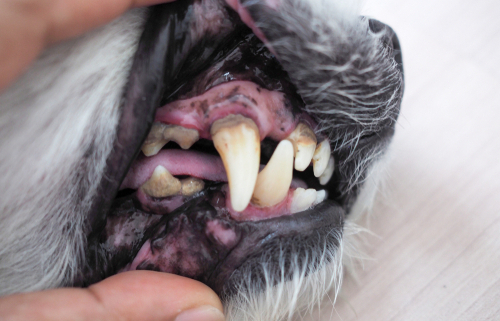Gingivitis in Dogs
Gingivitis is very common in dogs, but the good thing is that it is very treatable. Gingivitis is an inflammation of the gums and the early stage of gum disease called periodontal disease. If left untreated, it can develop into an advanced periodontal disease, which can lead to teeth loss. It is caused by a bacterium that builds due to tartar and plaque buildup. The inflammation of the gums may become very painful, which may cause bleeding.
The symptoms of gingivitis in dogs may start out with mild inflammation of the gums at first, but as the gum disease progresses, symptoms will become more severe and noticeable. Below is a list of common symptoms to look for.
- Thin, red line along the gums
- Swollen gums
- Bad breath
- Plaque buildup, visible as stained teeth
- Tartar buildup, visible as calcified areas on teeth
- Difficulty eating
- Reluctance to eat
- Drooling
- Loose teeth
The main causes of gingivitis in dogs are poor diet and a lack of oral hygiene, though certain dogs who have crowded teeth–such as toy breeds–and dogs who groom themselves are at greater risk for gum disease. When a dog’s teeth and gums are not properly cared for, food particles and bacteria build up in crevices between the teeth and gums, causing inflammation and irritation. As the bacteria grow in number, they stick to the teeth and form plaque, which calcifies and becomes tartar.
How can you prevent Gingivitis? Regular, at-home teeth brushing, and occasional professional teeth cleanings will work wonders. However, many dog owners do not give enough thought to their dogs’ dental health until it is too late. If you see signs of gingivitis in your dog, please contact your veterinarian about treatment on how to further prevent gum disease. They may prescribe special toothpaste, gels, or formulas in addition to chew treats and toys to remove plaque buildup.



